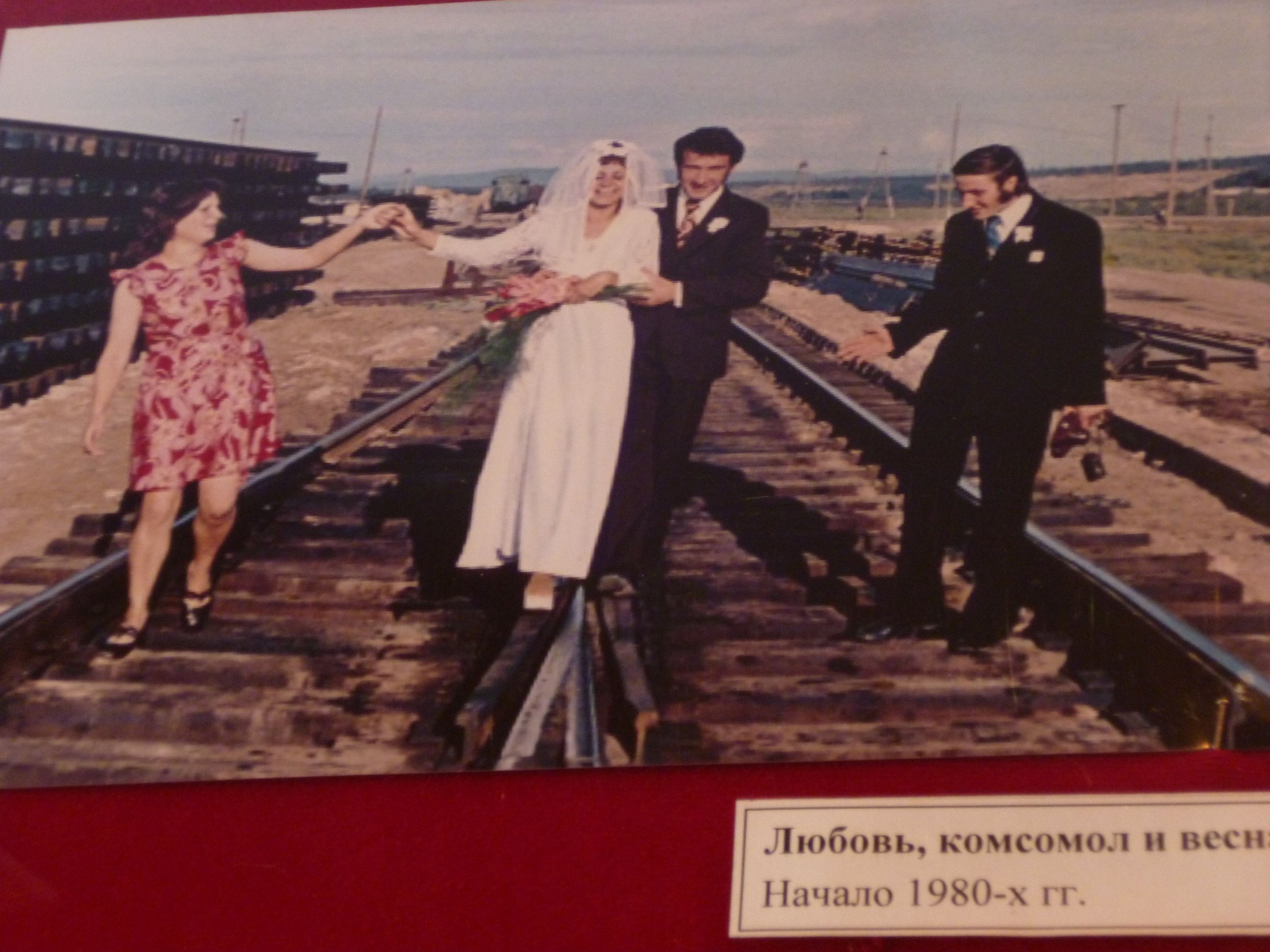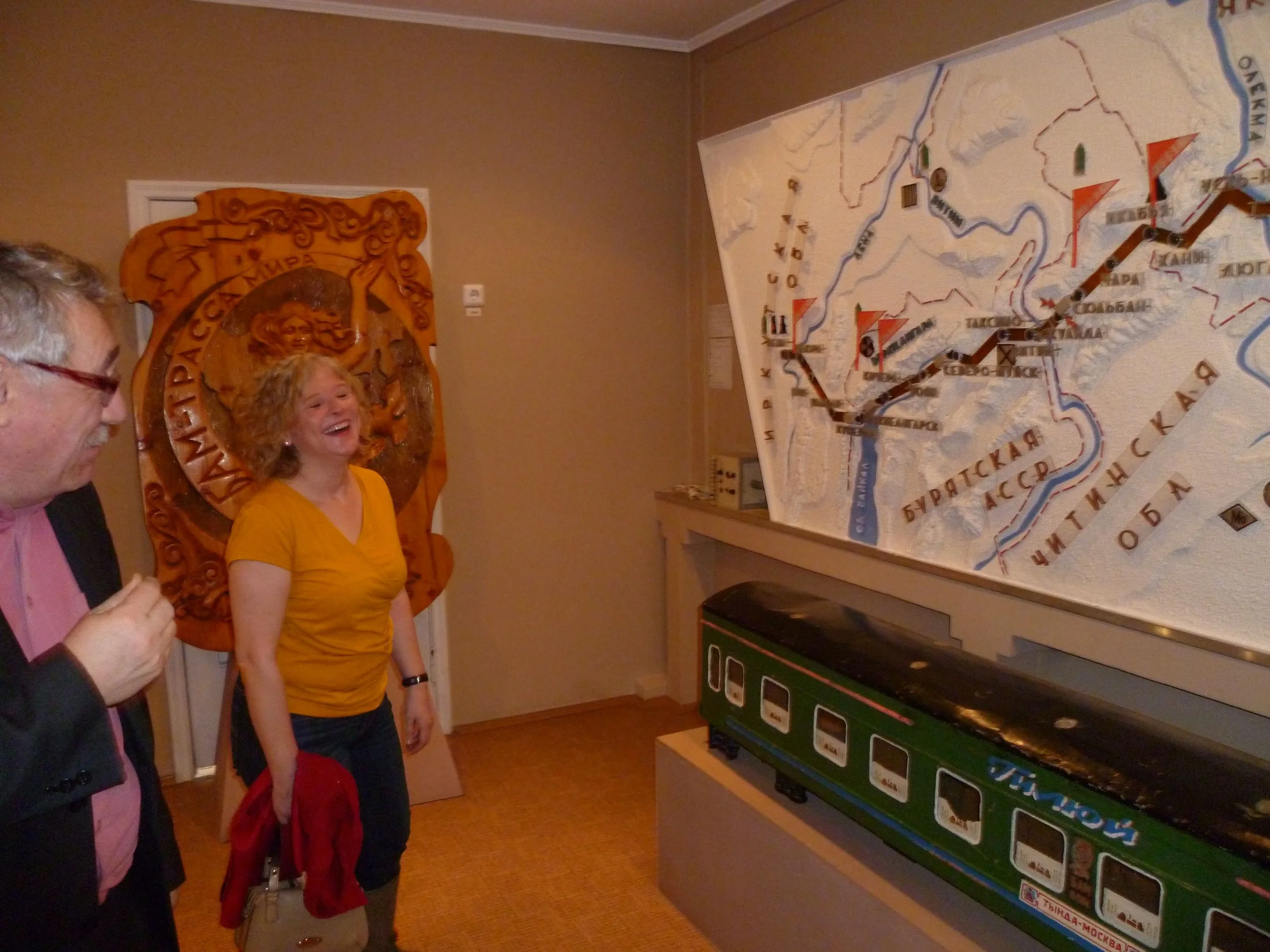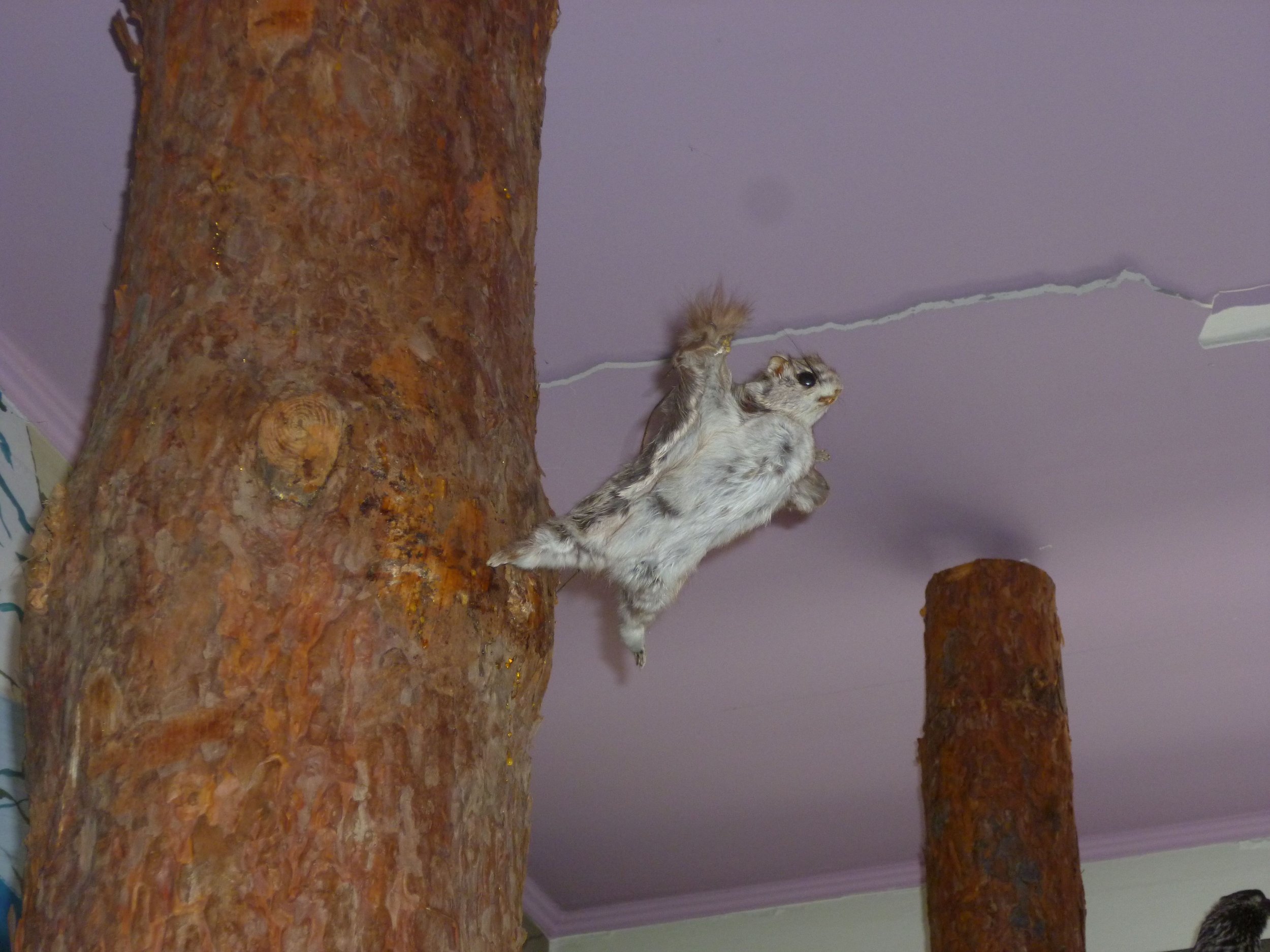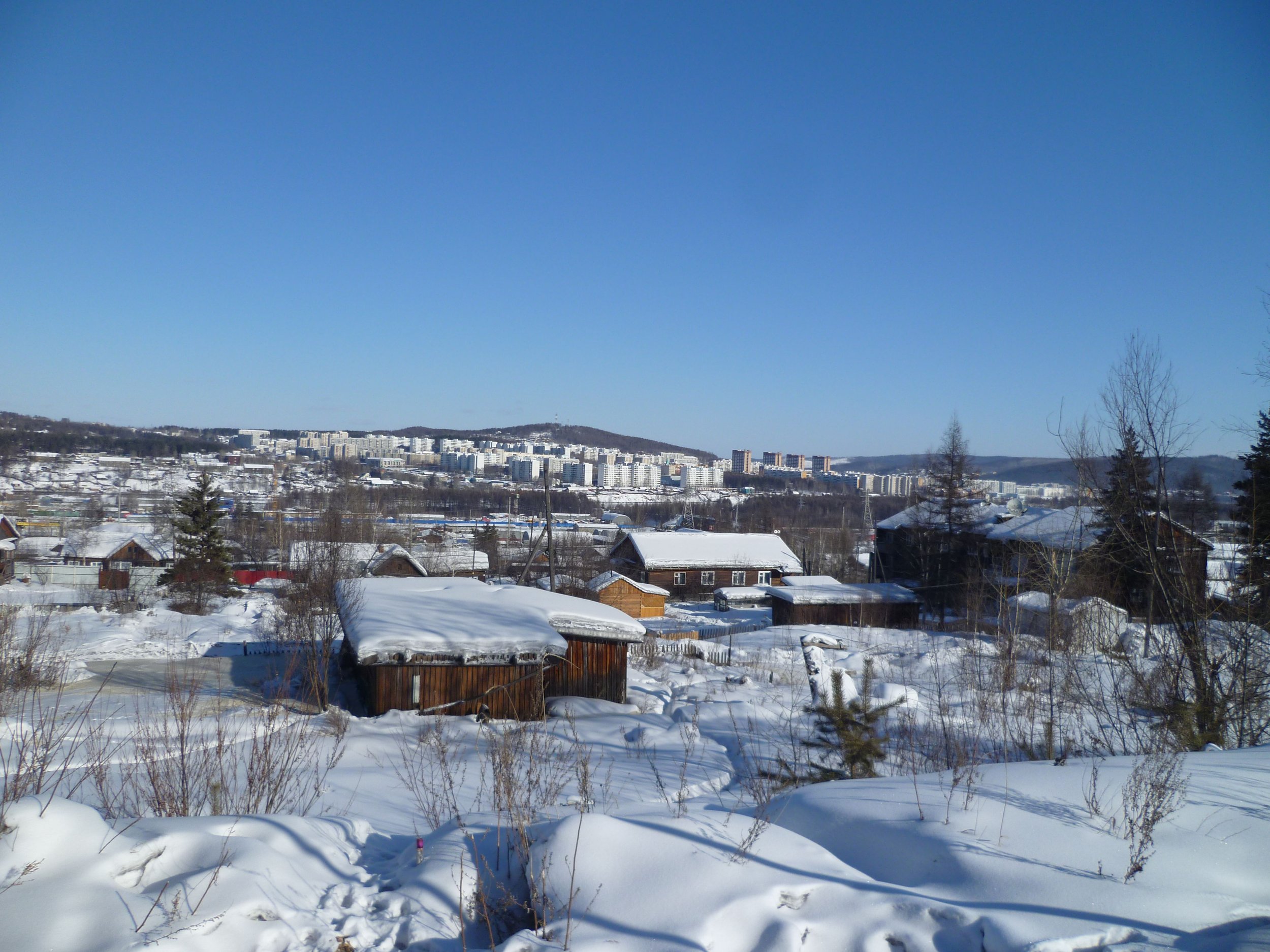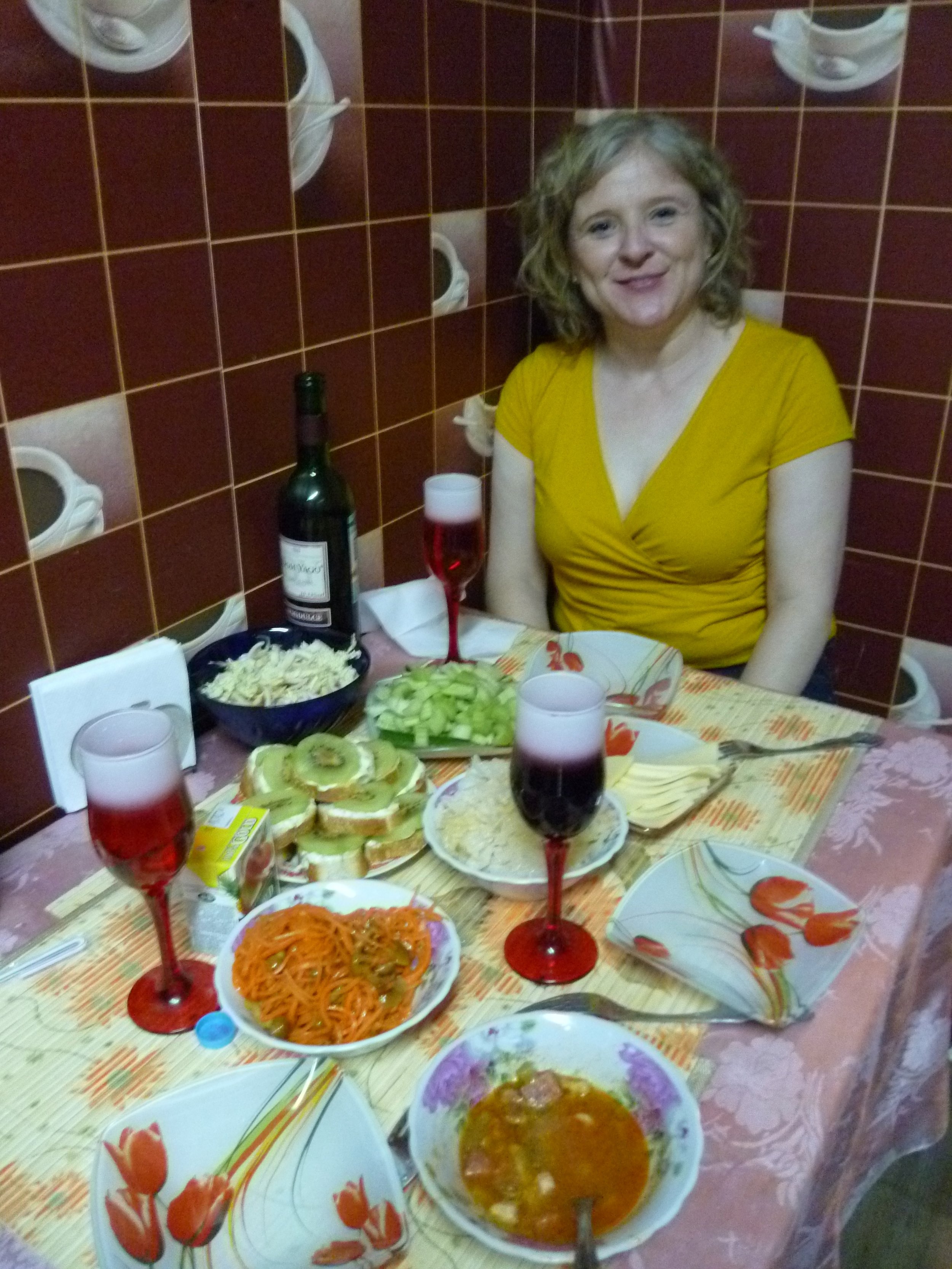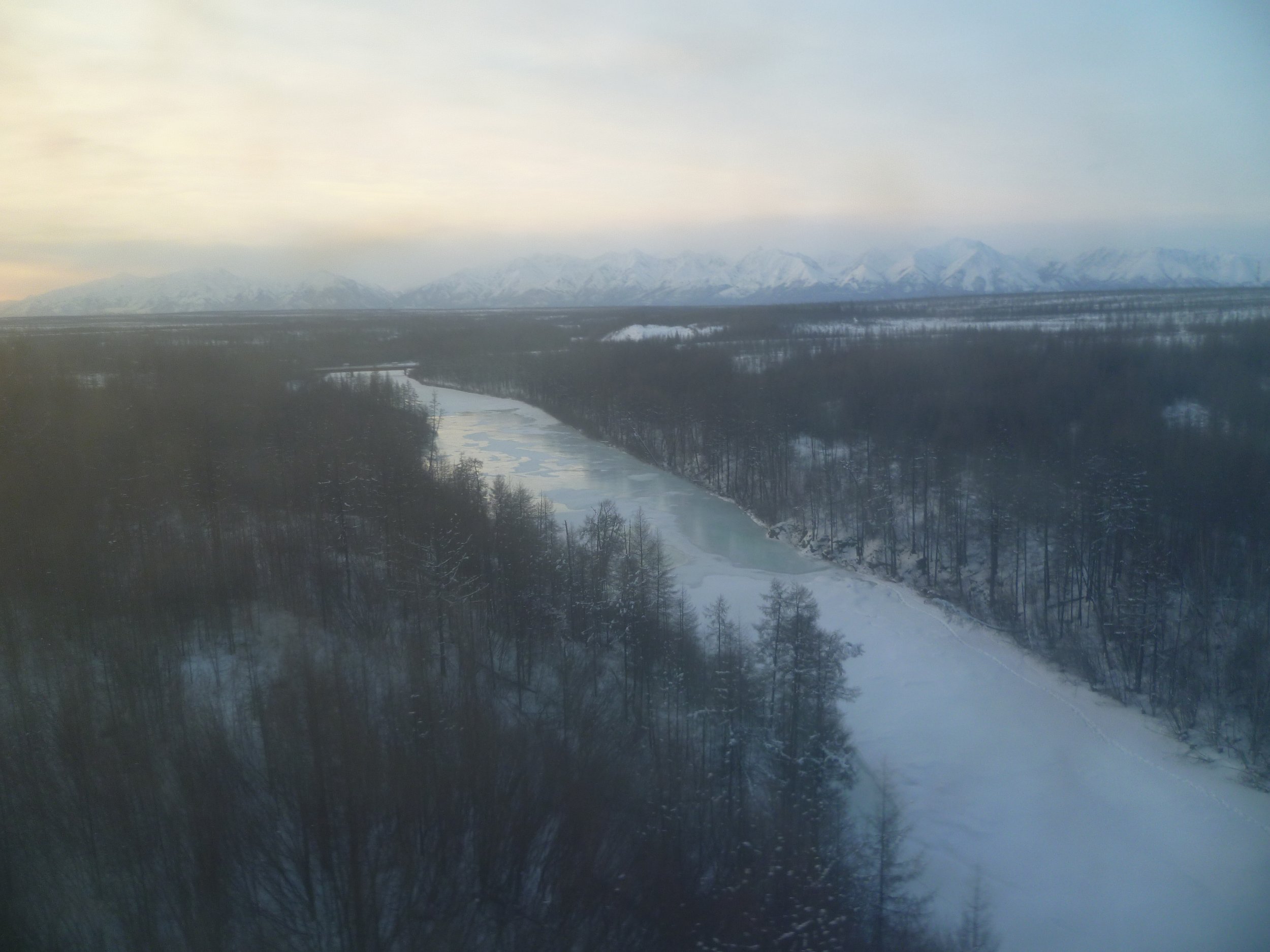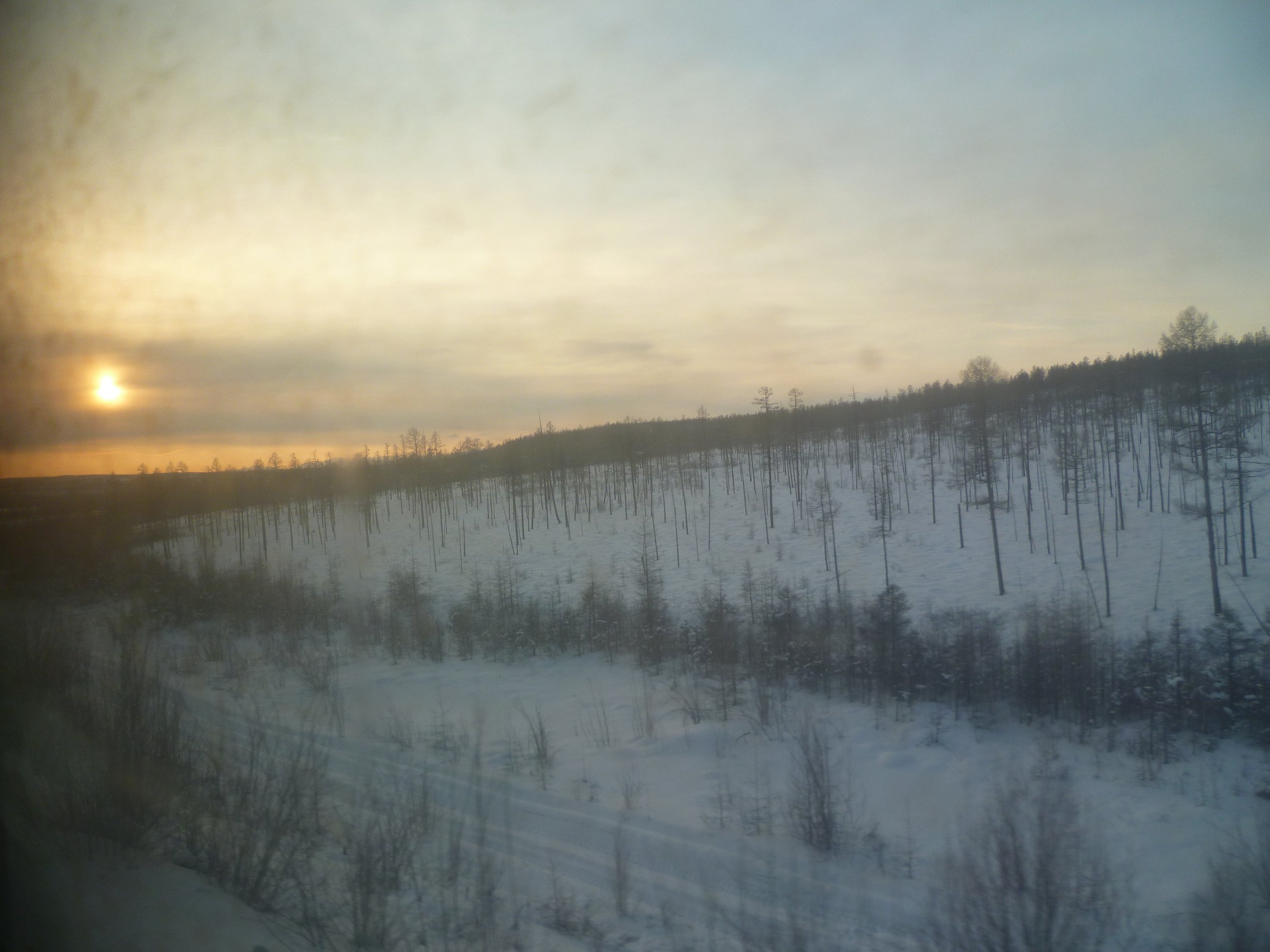Tynda!
Later Friday evening I was joined by Olga, a 55-year old woman traveling home from a business trip. She is in sales and she had gone to check on a store. She quickly told me the story of her entire life, including her son’s suicide by hanging. Luckily, this was followed with happier news of grandchildren and various travels. She showed me every photo stored on her camera—thus, I was thoroughly informed of the last three years of her life. I can tell you this: she and her family dress up in crazy costumes for New Years, someone in her family likes to mold food into funny shapes, and she strives to put ever larger puffy bows in her granddaughter’s hair. Thankfully, her cell phone had precious little storage space for photos.
I had been snacking all afternoon, mostly out of lack of anything else to do, but she made me eat half of her dinner, which was thoroughly delicious: homemade kotleti and mashed potatoes, the potatoes having come from her own garden.
We got to talking about life and she is an eternal optimist. She loves to travel, loves her grandchildren, and loves to embroider. Her photos clearly captured many joyful moments. I think she is a fairly happy woman, despite some tragedies in her life.
In the morning I decided to forego personal hygiene since I knew I would soon be near a stationary wash basin. I got off the train and was met by Aleksey from AmurIntour and his driver Archil. I swear Aleksey came straight out of central casting for “Russian in winter.” He’s a barrel-shaped man in a gigantic ushanka hat. We give Olga a lift into town and head for my homestay with a woman named Natasha.
Now, how I came to be with Natasha is a bit of a mystery. Aleksey doesn’t know her and neither does Archil, but she’s a very friendly lady who immediately sat me down and gave me tea and blinchiki. She also gave me a gigantic jar of bryusnika. Please, luggage gods, do not let this jar break! Natasha seems to be a little bit younger than me with twin boys who just finished high school. She’s got a dog named Uma and a friendly cat that has me missing my Cardigan.
I got to rest a bit and then Aleksey and Archil showed up again to take me to the BAM museum. It just so happened that today is February 23, Defenders of the Fatherland day. This holiday is kind of the men’s version of Women’s day, which is on March 8. Anyway, as a result of this, most things were closed in Tynda today. Luckily, Aleksey was able to arrange with the director of the BAM museum to be there for me to give me a private tour.
The director of the BAM museum is an incredible man named Sergey Fedorovich. He’s a history teacher by profession and he pretty much single-handedly put together this museum. Many of the artifacts are his own. He’s clearly enraptured by history and easily transfers his enthusiasm to everyone around him.
So…a little about the BAM. It’s the purpose of the trip, after all. The BAM is a railroad that connects northern Baikal with Russia’s Far East and the Amur River. Hence Baikal-Amur-Magistral (BAM). Before the BAM, Tynda was a little town in an area populated by the Evenki (indigenous people). The Evenki still live in the area, but their numbers have dwindled. They’re semi-nomadic and their lives pretty much revolve around reindeer.
In the 30s, Stalin ordered construction of the BAM. Workers were sent to the area but the conditions were harsh and, basically, they abandoned their work. Due to the labor shortage, prisoners were brought in to build the BAM instead. Primarily, these were political prisoners, caught up in Stalinist repression. Here you can see some artifacts of the prison camp constructed to house these prisoners:
This was the BAMlag. Here is an example of the barracks in which the prisoners lived:
And here is a map of all the prison camps along the BAM route:
The group Memorial is still collecting the names of everyone who was a victim of repression in the BAM area. Here are two volumes of their “Memory Book,” listing names:
Some prisoners just stayed on after their terms were up. This house is the house of a man who was arrested for brewing moonshine and sent to internal exile in Tynda. He wound up staying and his descendants live there still today.
Now, these prisoners obviously put in a ton of work under conditions that seem nearly unbearable. But soon after the prisoners had finished laying a good long stretch of track, the Nazis invaded. Troops in the Battle of Stalingrad, arguably THE most important battle of the entire Second World War, were desperately in need of rail lines so all the track was taken up and sent south to the battlefield. (History capsule: Stalingrad marked the Nazi retreat from Russia and Russia’s advance into Berlin, ending the European war in May 1945.)
The BAM project was pretty much abandoned, then, until the 70s, when Brezhnev decided to re-start the project, but this time with paid labor. Again, the Komsomol youth were brought in to build. These were extremely happy times along the BAM route. The young workers were well fed, well paid, and enjoyed their days of long work followed by evening dances in outdoors pavilions. Famous stars came to the BAM region to entertain the workers as they built all manner of structures that would be needed for the “cities of the future” along the BAM: schools, hospitals, concert halls, sports facilities, etc. Each of the stations along the BAM is unique—and LARGE. It was expected that the area would become highly populated, but that never exactly happened. So along the railroad there are some stops with enormous train stations and little else. Here is Tynda’s train station:
BAM workers lived in these “barrels”—metal mini-houses, all with standard amenities. They lived like this:
Here is one on display outside the museum:
This is the first wedding celebrated during BAM construction:
And this is a wedding among Komsomol builders in the 80s:
Here are some random photos of me in the museum:
For reasons that are still unclear to me, Sergey Fedorovich was recently paid a visit by a certain Mr. Kalashnikov, inventor of the AK-47. He was given a model of the gun signed by the man himself. The guys were really into this and Sergey Fedorovich was clearly proud to show it off. Then they insisted I pose with it, so here I am, under duress:
The museum ended with an exhibit about nature, featuring really scary-looking bugs and some tastefully taxidermied animals, including this flying squirrel:
After the museum we went on a little driving tour of Tynda with Sergey Fedorovich.
Then things got a little strange.
We were supposed to go to a town called Zarya, where Evenki children study. The plan was that I would go to their English class and we would have a little cultural exchange of sorts. But because of the holiday, the school was closed. The idea of paying a teacher to come in and dragging all the children in just so I could look at them was obviously absurd. It seemed like Archil and Aleksey were going to drive me to Zarya anyway, albeit unenthusiastically. I told them I didn’t want to drive so far to see nothing so instead we agreed to eat lunch. First we ran some errands—which included stopping by a café to pick up some kotleti for Aleksey’s wife. Apparently the kotleti were payment for some cell phone services Aleksey had provided to the café’s owners. Then we went and dropped the kotleti off at Aleksey’s house, marveling at the fact that his yard attendant had, inexplicably, dug a big ditch in the snow immediately in front of the apartment building, creating an accident-waiting-to-happen. Finally, we went to a café to actually eat.
The café itself looked like just a little hole in the wall with some Uzbek items on the menu, including a few soups I’d never heard of. I played it safe and got a spicy salad and some plov. The salad and the plov arrived in typical little dishes and both looked somewhat grey-ish and greasy. But whatever. I took a bite of the plov with increasingly lowered expectations. But lo and behold, it was the best goddamn plov I have ever tasted in my life. Seriously, it looked extremely ordinary and even unappetizing. But the rice and meat was packed with a rich, perfectly-seasoned flavor like none I’d ever had. The salad was also outstanding: a tangy carrot and beet mixture that grew more flavorful the more I ate of it. After seeing my reaction to the plov, Aleksey and Archil insisted I taste their soups. I just don’t know how to adequately describe these intensely interesting, complex, and surprising broths. If I were sick, I’d want nothing but that broth.
After lunch we went vacuum cleaner shopping.
In the evening, Natasha was determined to celebrate the holiday even though the only men around were her two high-school age sons who had never defended any fatherland and refused to tear themselves away from their video games. So Natasha’s friend Oksana came over with her darling 3-year-old girl. On Men’s Day, we celebrated with a Girl’s Night.
Natasha, who is by no one’s definition fat, has been trying for some time to lose weight, which might explain the peculiar party food: plain cucumbers, celery, and unadorned cabbage, plus some Korean salads (sidenote: I adore these salads so this was ideal for me) and a snack of her own creation: slices of bread spread with garlic mayonnaise, topped with a slice of kiwi.
We had some champagne and got into really interesting discussions about Tynda. Natasha is a journalist who writes for the local paper so she definitely has her finger on the pulse of the city, which is still mourning the death of its beloved 5-term mayor. Despite its small size, Tynda boasts a wide variety of athletic and artistic opportunities: ski slopes, a hockey rink, a pool, a soccer stadium, an art school, a dance school, etc. Natasha’s sons have for years participated in a local dance troupe that has repeatedly won prizes from as far away as Montenegro. She insisted that I take a look at a video of one of their performances, and after a few glasses of wine, I was happy to indulge her in this. The first number was a zippy patriotic romp that, again, as a result of the wine, left me feeling touched and somehow nostalgic.
An hour and a half later, however, and I was cursing those damn teenagers and their infinite recital. Natasha kept saying, “One more! One more!” After three more I finally managed to escape through sheer force of will and mild physical assertiveness.
The next morning was a flurry of rushing to get me to the train on time, which this time was a beautiful kupe with bedspreads, a carpet, and shimmery curtains. I was the only passenger in the whole train car. I luxuriated in my cozy solitude, surrounded by bottomless tea and soft blankets while I watched the snowy taiga pass outside the window.
After a nap I made my way to the dining car and decided to have myself an afternoon celebration. The view was spectacular. I ordered a bottle of champagne and, little by little, drank the whole thing. Thanks to some cheese sandwiches and an apple, I maintained my dignity all the way back to my kupe, where I proceeded to close the door and have myself an all-afternoon iPod-fest, complete with masterful air guitar, if I do say so myself.












